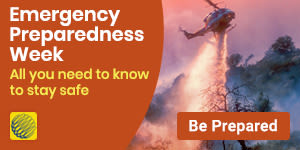What's Up In Space: Asteroids, asteroids, everywhere and two dwarf planets in our sights

A partially-completed orbit by NASA's NEOWISE asteroid and comet hunter. Credit: NASA/JPL-Caltech
Meteorologist/Science Writer
Wednesday, January 21, 2015, 7:04 PM - Welcome to the first entry of a new weekly series here on The Weather Network, highlighting the latest events and discoveries in space!
Asteroids, asteroids, everywhere...
and fortunately none that will hit us.
Look up in the sky on any clear night and you have a fair chance to see at least one meteor streak through the sky. In fact, tons of rock and ice from space falls down to Earth every day, most of it in the form of dust particles and ice grains. However, every once in awhile the planet sweeps up something a bit bigger as it travels around the Sun. We witnessed a rather dramatic example of this back in February 2013, over Chelyabinsk, Russia, and researchers have found that this was only one of hundreds that have hit the Earth just in the past 20 years!
![]() RELATED: Asteroids colliding with Earth more than 550 times in 20 years
RELATED: Asteroids colliding with Earth more than 550 times in 20 years
So, it should come as no surprise that astronomers are keenly interested in finding out where all these larger objects are, so that we can avoid a disaster. One way of doing this is through survey efforts via ground telescopes and tracking cameras, run by both professional and amateur astronomers, but the undisputed champion of asteroid spotting is the WISE satellite - NASA's Wide-field Infrared Survey Explorer. Thanks to this telescope, which scans space for these objects by watching for the heat that they radiate off as they're warmed by the Sun, we have been treated to an impressive (and somewhat frightening) look at the thousands upon thousands of asteroids and comets that are flying around inside the orbit of Jupiter, many of which cross over the path of Earth's orbit (click here to see an example for yourself).
WISE's mission ended in 2011, with the still-operational satellite simply being shut down and left in orbit. However, in 2013, the mission was resurrected in the form of NEOWISE, specifically to search for near-Earth objects (the NEO in NEOWISE). These are the ones that either fly along with Earth in its orbit, coming close to us, and even crossing our path, making them a potential threat at some point down the road.
After one full year of scanning for these objects, NASA has released this video, showing the position and movement of all objects spotted within roughly 200 million kilometres of the Sun, or just inside the closest point of Mars orbit.
As the video caption says, while the grey dots are the objects of the asteroid belt (and thus aren't much of a threat to us), the green dots are the near-Earth asteroids, and the yellow squares are comets. The two narrow cones that NEOWISE scans along over time, as seen in the video, were specifically chosen as a careful balance of avoiding catching the blazing light of the Sun in its view (which would overload its optics), while at the same time getting the maximum amount of the sunlit side of the asteroids in view of the its detectors.
According to JPL News, NEOWISE watched a total of 245 NEOs during its trip around the Sun with us, discovering 40 new ones, eight of which are now classified as 'potentially hazardous asteroids' (PHAs). For an object to earn its place on that list, it has to come fairly close to Earth at some point in its orbit (within about 20 times the distance to the Moon), and it has to be large enough (anywhere from about 75 metres on up to kilometres across) that it could cause considerable damage if it impacted with the planet.
At the same time, the telescope spotted a total of 35 comets (including the most recent Comet Lovejoy), with three of those being newly-discovered by the mission.
So, a highly-successful year for NEOWISE, and hopefully more to come as this satellite continues to provide us with more information about these fascinating (and potentially dangerous) objects.
NEXT PAGE: On approach to Ceres, the largest object in the asteroid belt



